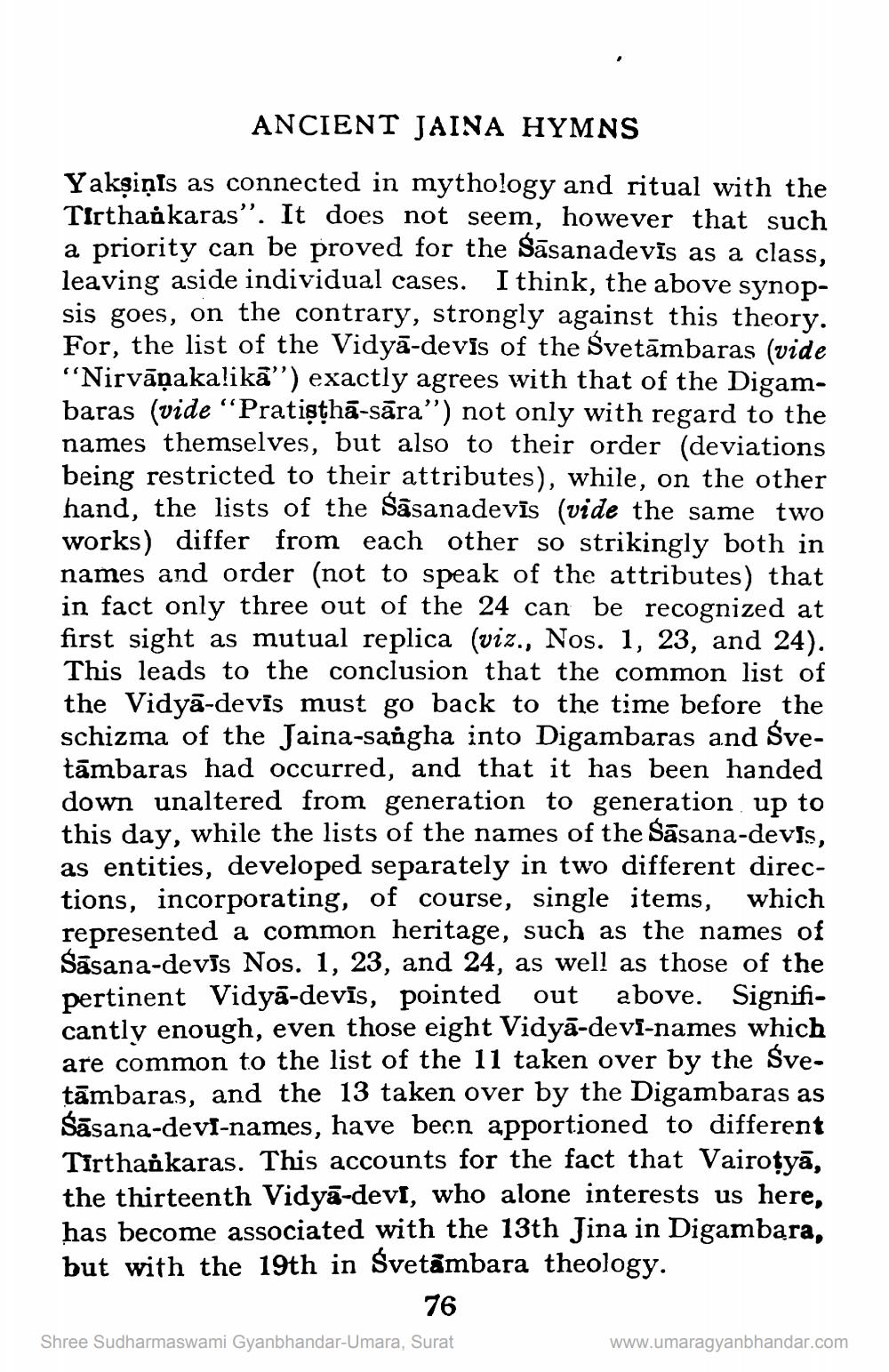________________
ANCIENT JAINA HYMNS
Yaksiņis as connected in mythology and ritual with the Tirthaå karas”. It does not seem, however that such a priority can be proved for the Šāsanadevīs as a class, leaving aside individual cases. I think, the above synopsis goes, on the contrary, strongly against this theory. For, the list of the Vidyā-devis of the Svetāmbaras (vide "Nirvāṇakalikā”) exactly agrees with that of the Digambaras (vide “Pratisthā-sāra”) not only with regard to the names themselves, but also to their order (deviations being restricted to their attributes), while, on the other hand, the lists of the Sāsanadevīs (vide the same two works) differ from each other so strikingly both in names and order (not to speak of the attributes) that in fact only three out of the 24 can be recognized at first sight as mutual replica (viz., Nos. 1, 23, and 24). This leads to the conclusion that the common list of the Vidyā-devis must go back to the time before the schizma of the Jaina-sangha into Digambaras and Svetāmbaras had occurred, and that it has been handed down unaltered from generation to generation up to this day, while the lists of the names of the Sāsana-devis, as entities, developed separately in two different directions, incorporating, of course, single items, which represented a common heritage, such as the names of Sāsana-devis Nos. 1, 23, and 24, as well as those of the pertinent Vidyā-devīs, pointed out above. Significantly enough, even those eight Vidyā-devi-names which are common to the list of the 11 taken over by the Šve. tāmbaras, and the 13 taken over by the Digambaras as Śāsana-devi-names, have been apportioned to different Tirthaikaras. This accounts for the fact that Vairotyā, the thirteenth Vidyā-devi, who alone interests us here, has become associated with the 13th Jina in Digambara, but with the 19th in Svetambara theology.
76
Shree Sudharmaswami Gyanbhandar-Umara, Surat
www.umaragyanbhandar.com




